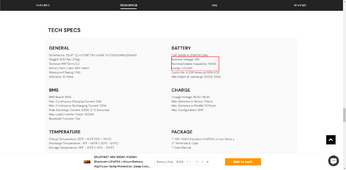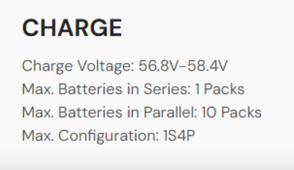Hi Everyone,
I am new to the whole DIY battery thing.
Only have experience with portable power stations.
I was doing my research on some LFP batteries, and I can't understand the logic.
Why does a 48V100Ah LFP battery have a capacity of 5,120Wh instead of 4,800Wh?
LFP battery cell has a voltage of 3.2V so connecting 15 cells in series results in 48V(3.2*15=48).
If the 51.2V is 16 cells in series, then why not use 15 or call it 51.2V?


I am new to the whole DIY battery thing.
Only have experience with portable power stations.
I was doing my research on some LFP batteries, and I can't understand the logic.
Why does a 48V100Ah LFP battery have a capacity of 5,120Wh instead of 4,800Wh?
LFP battery cell has a voltage of 3.2V so connecting 15 cells in series results in 48V(3.2*15=48).
If the 51.2V is 16 cells in series, then why not use 15 or call it 51.2V?


Last edited:




